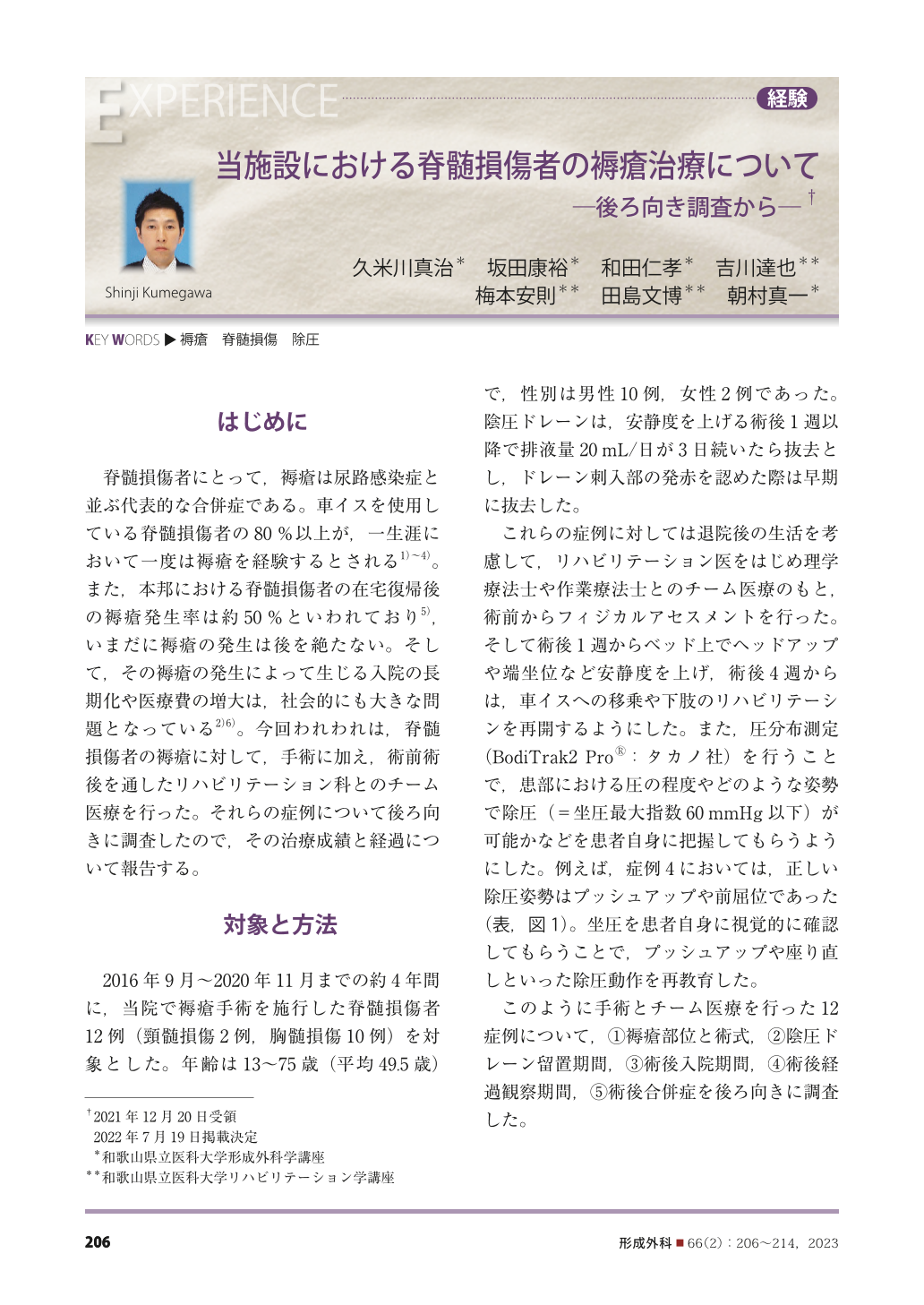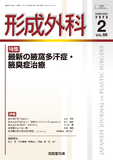Japanese
English
- 有料閲覧
- Abstract 文献概要
- 1ページ目 Look Inside
- 参考文献 Reference
はじめに
脊髄損傷者にとって,褥瘡は尿路感染症と並ぶ代表的な合併症である。車イスを使用している脊髄損傷者の80 %以上が,一生涯において一度は褥瘡を経験するとされる 1)~4)。また,本邦における脊髄損傷者の在宅復帰後の褥瘡発生率は約50 %といわれており 5),いまだに褥瘡の発生は後を絶たない。そして,その褥瘡の発生によって生じる入院の長期化や医療費の増大は,社会的にも大きな問題となっている 2)6)。今回われわれは,脊髄損傷者の褥瘡に対して,手術に加え,術前術後を通したリハビリテーション科とのチーム医療を行った。それらの症例について後ろ向きに調査したので,その治療成績と経過について報告する。
Pressure ulcers, along with urinary tract infections, are some of the most common complications in individuals who have suffered a spinal cord injury. Pressure relief has been considered important for the prevention and treatment of pressure ulcers, but as a recent trend in pressure ulcer treatment, wound closure is often achieved with conservative treatments such as scar healing and skin grafting, which provide outcomes that cannot be expected with pressure relief. From our perspective, it is important that surgeons:(i) take pressure relief into account when performing spinal cord surgery and be fully aware that the patient may need a wheelchair for the rest of his or her life,(ii) conduct physical assessments with the collaboration of rehabilitation specialists and physical/occupational therapists,(iii) promote pressure-relieving movements,(iv) and promote appropriate wheelchair seating, in order to prevent the recurrence of pressure ulcers.

Copyright© 2023 KOKUSEIDO CO., LTD. All Rights Reserved.


